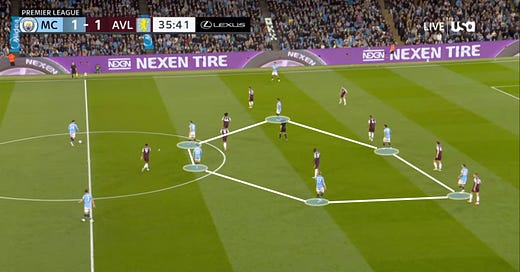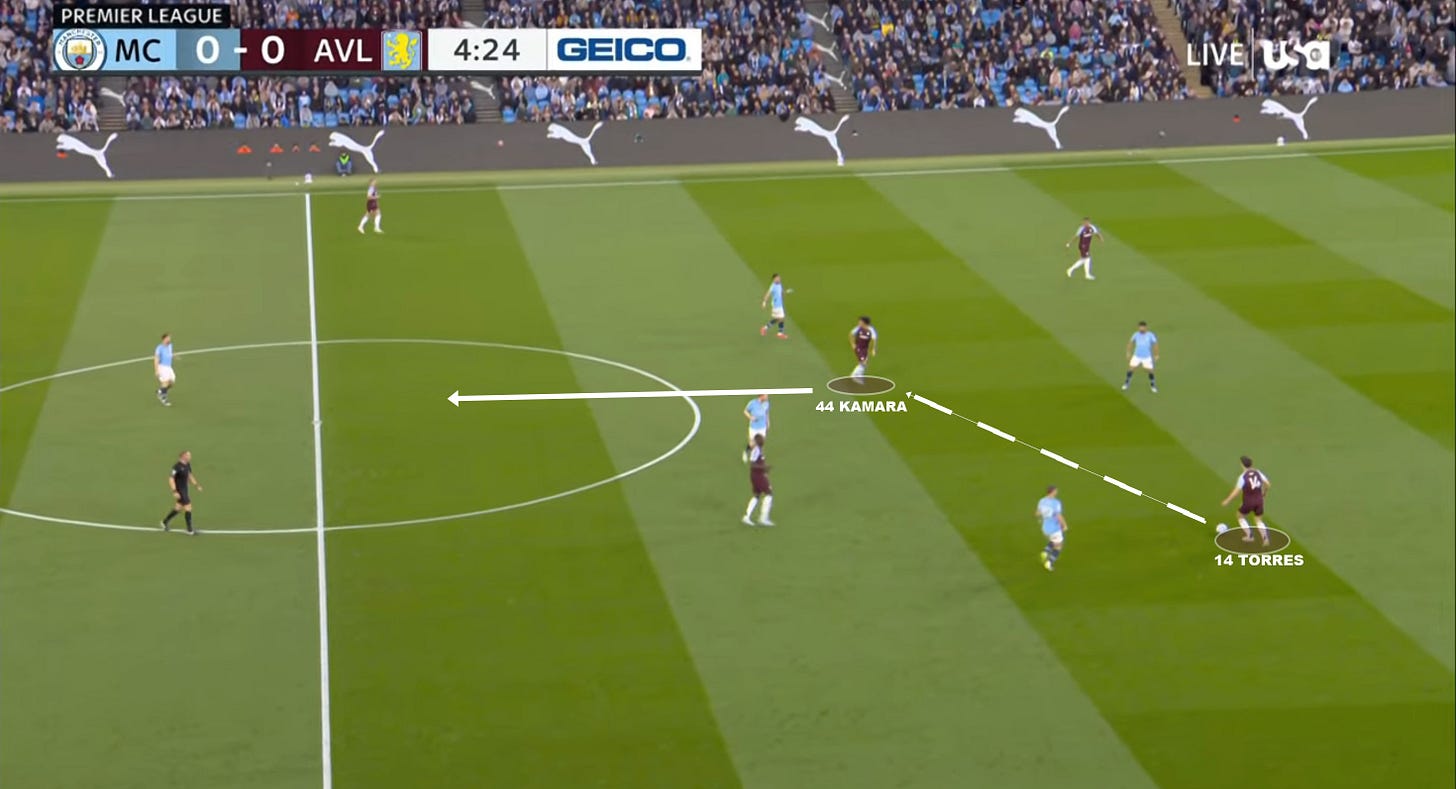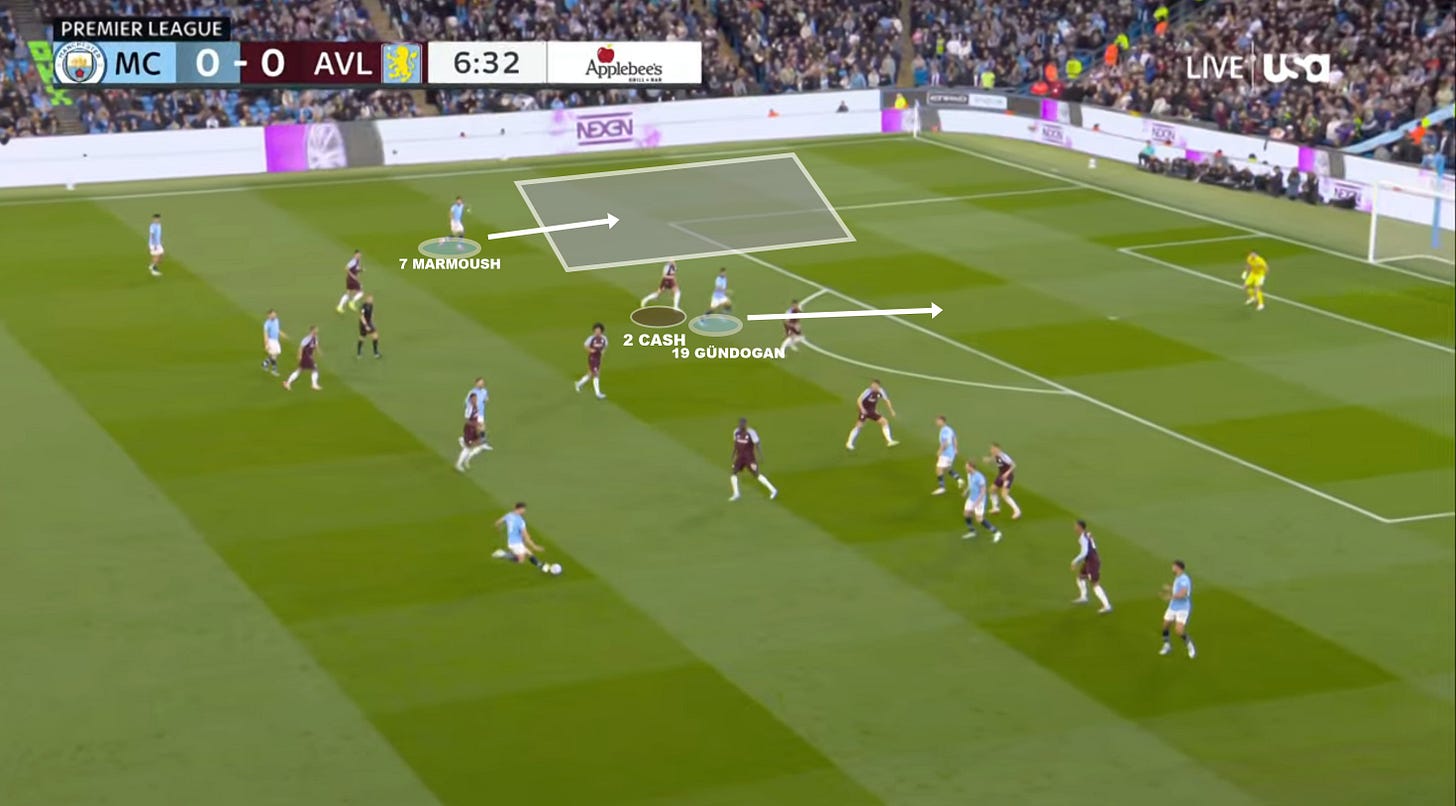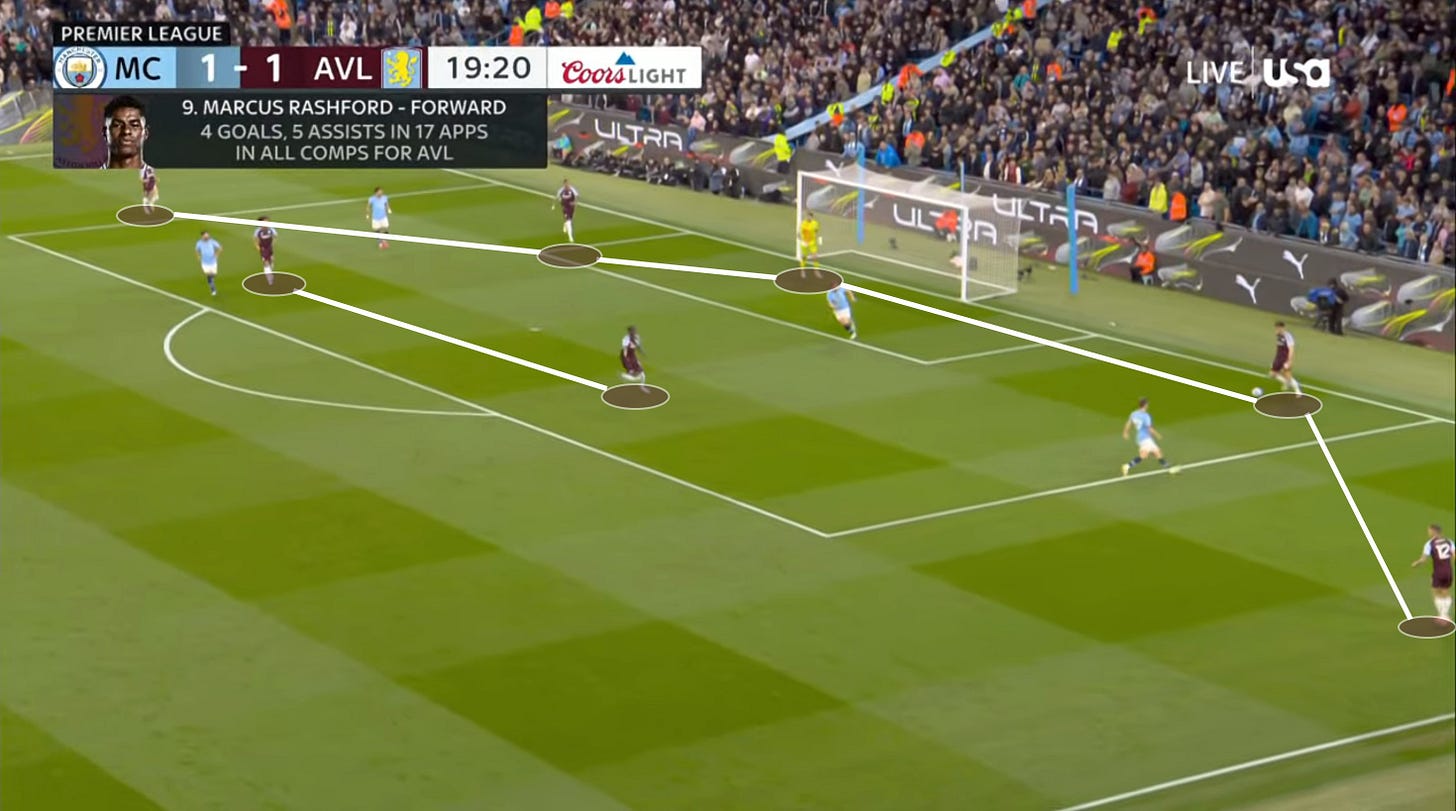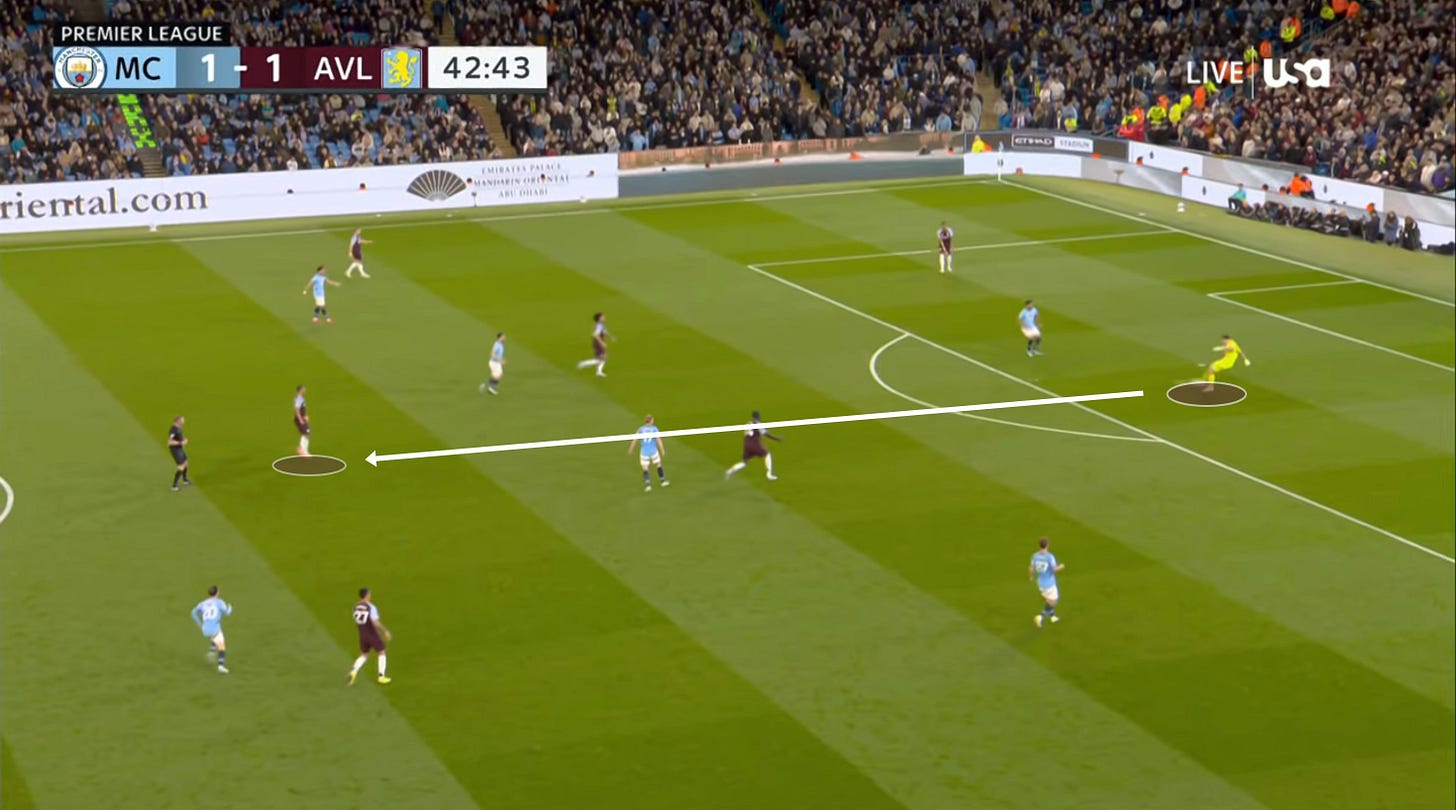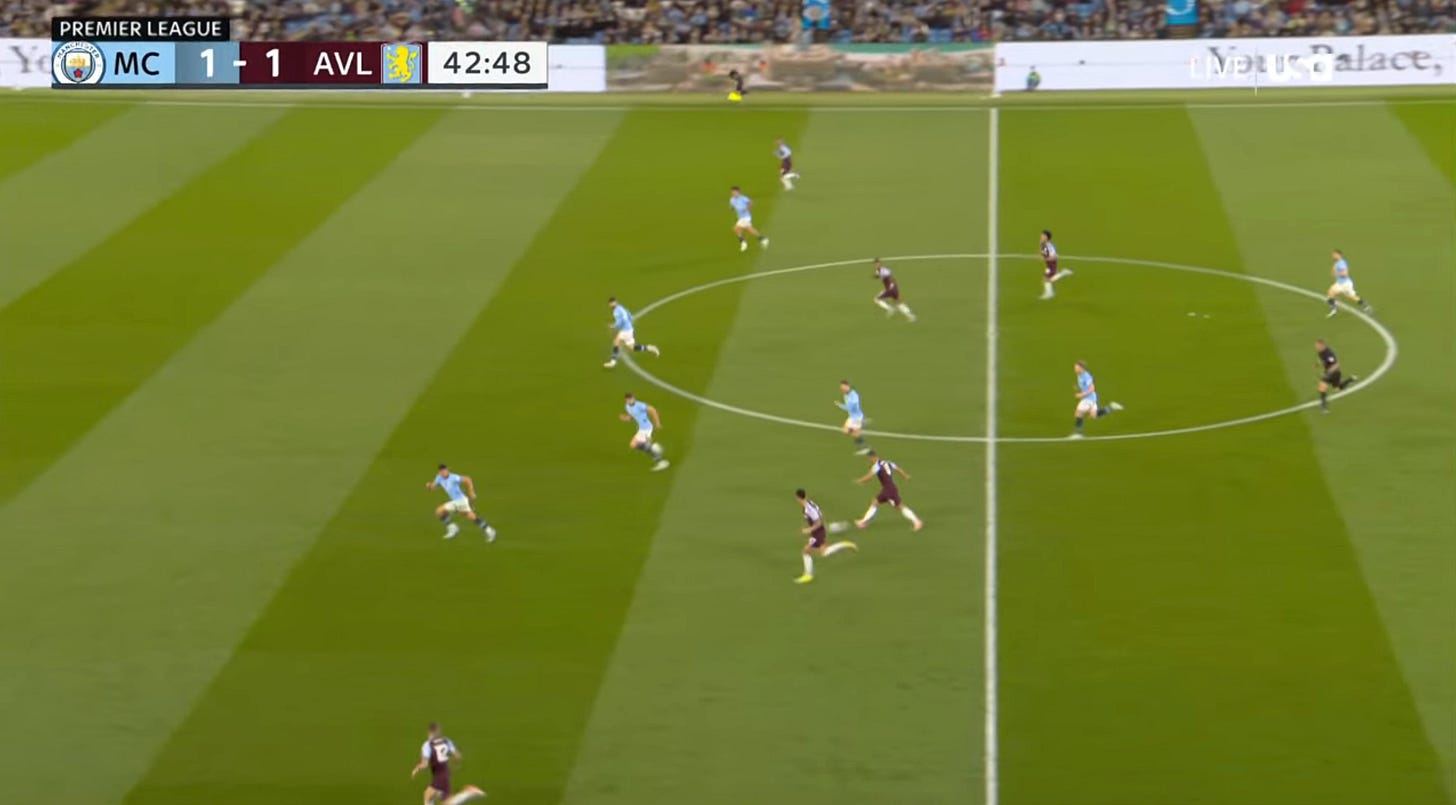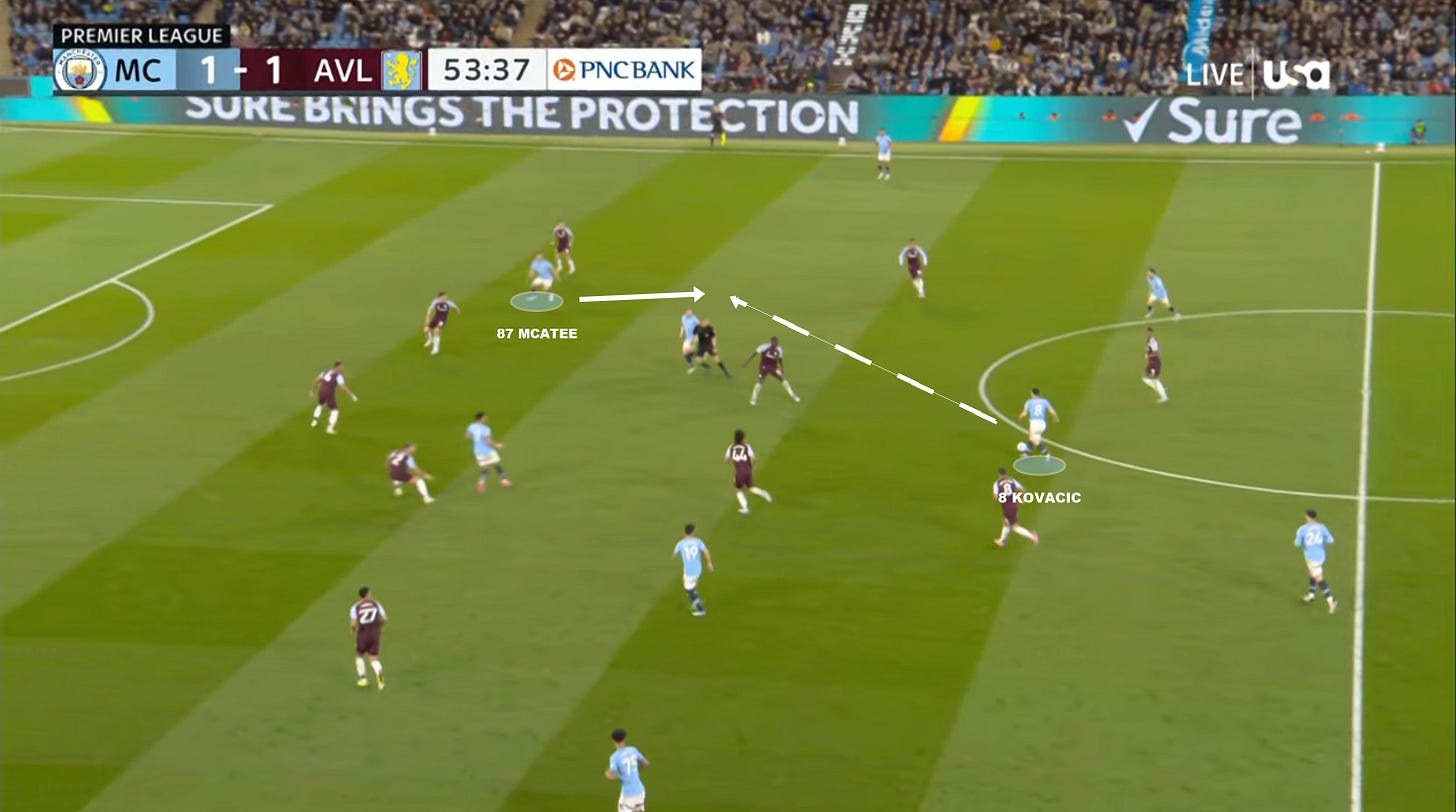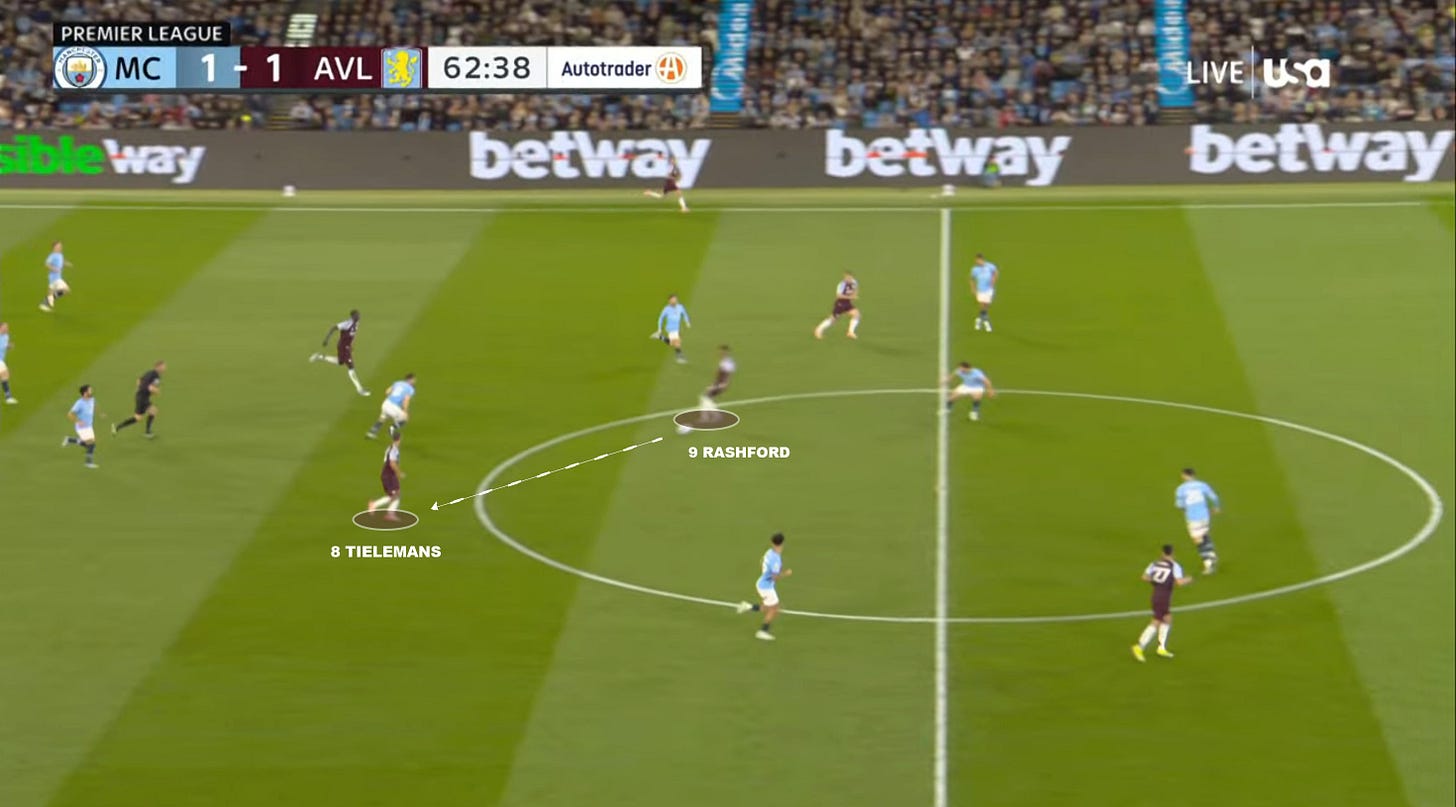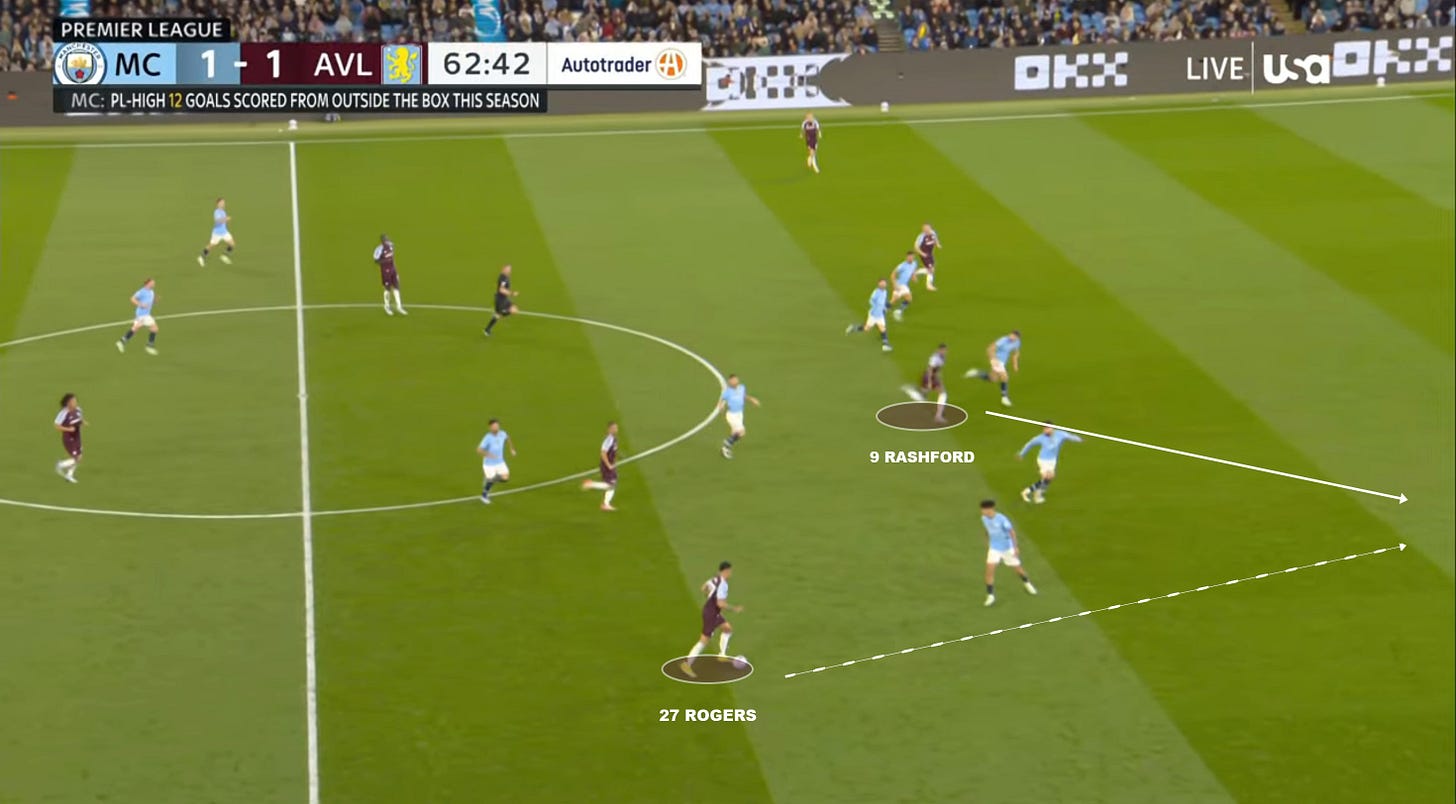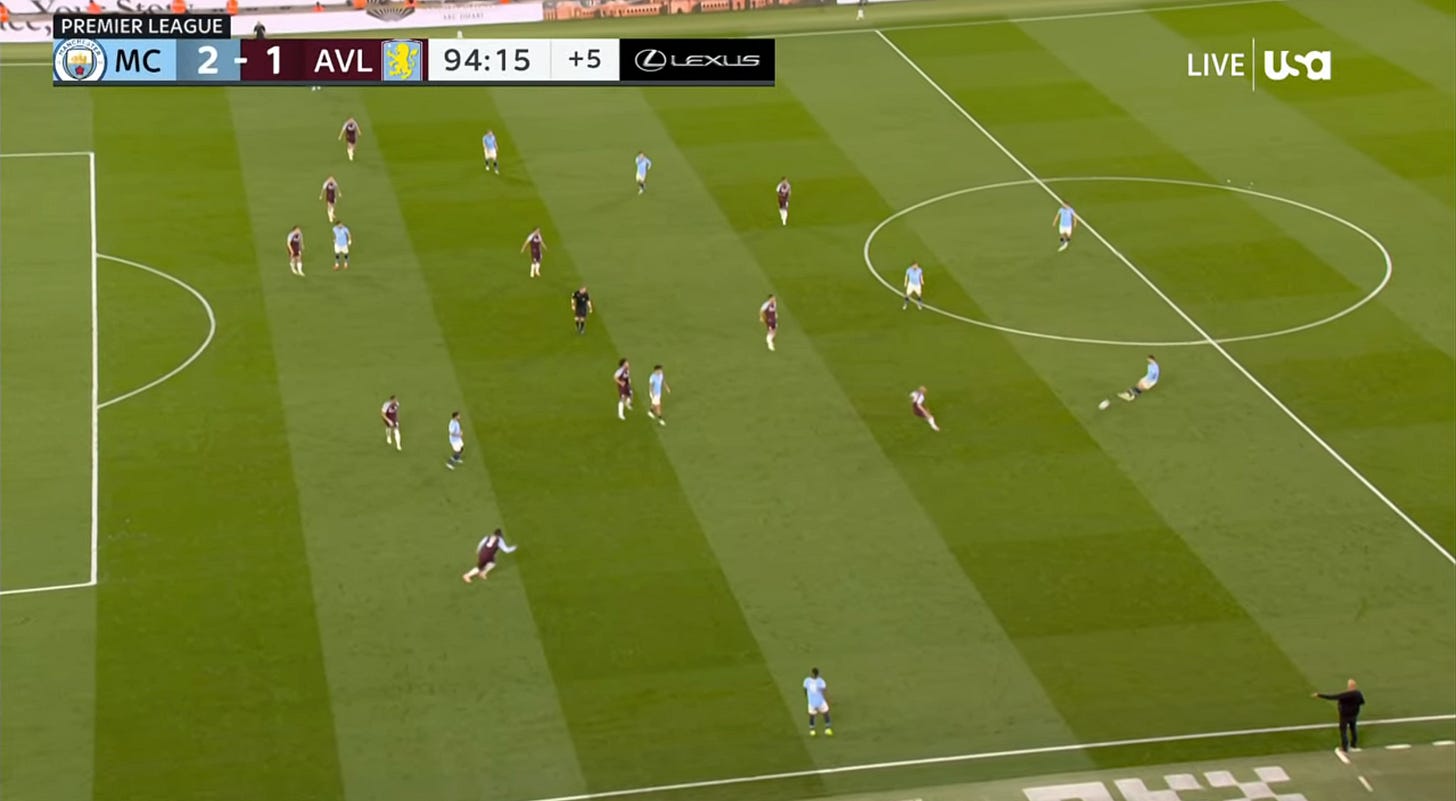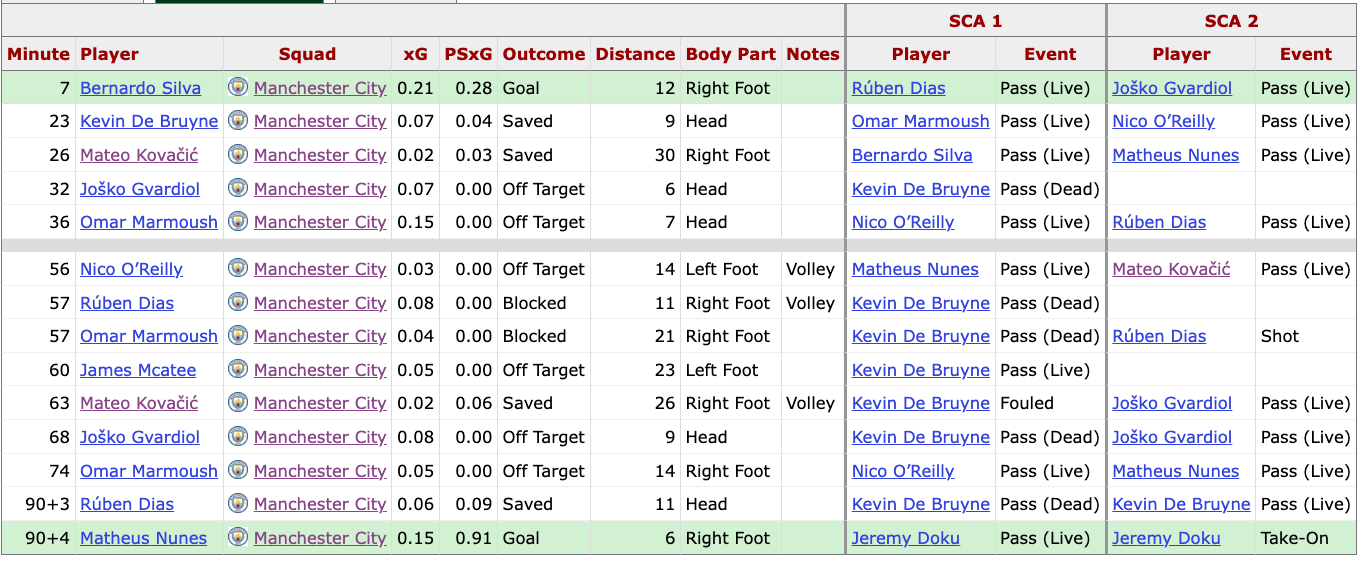Premier League Rewatch: Manchester City vs. Aston Villa Tactical Analysis
How Manchester City rescued three points in stoppage time.
What turned out to be a massive match in terms of Champions League football turned out to be very interesting tactically between Guariola and Emery who met for 17th time in their history.
While there weren’t very many high quality chances in the match, there were sure some interesting things happening tactically throughout the 90 minutes.
Let’s take a look.
First Half
Manchester City’s press has been terrible this season and there was a perfect example in the opening five minutes as to why.
Villa plays the ball backwards to invite City into pressing them. Notice Marmoush and De Bruyne both confused on who is marking Kamara.
The ball goes to Pau Torres and De Bruyne drops to mark Onana, but Marmoush doesn’t press Kamara.
Nothing comes of this, but because City allowed Villa to make a free run right through the middle, look at the passing options Kamara has to play in behind City’s high line.
The first goal comes as a result of great recognition from Pep of the matchup City had out wide and using the central overload to isolate players out wide.
Ilkay Gündogan makes a run across Matty Cash’s face and forces him to run with him, which frees up space for a switch ball to Marmoush out wide.
Marmoush then is able to beat Cash 1 v 1 and send a cross across the face (that does get deflected) right to Silva for the goal.
This is pretty poor box defending as well from Villa allowing so many City players real estate around the penalty spot.
Rashford scored a soft penalty to make it 1-1 as City got beat in transition, again.
Let’s talk about Aston Villa’s build up for the match. Emery loves to use Emi Martinez in build up to create a 5-2 shape, which allows them to always maintain a numerical advantage through the first phase, even if teams decide to press man to man.
In this scenario, City is only pressing with their front four and allow Villa to easily pass the ball centrally to Onana.
However, Villa’s decision making in build up is not always perfect. In fact, for the match against City they had 30 danger zone losses, with most of them coming down the left flank.
image via markstats.club
However, when Villa was able to play through City’s press, they could get City into situations like this where they are 1 v 1 against the back line and able to make runs in behind.
City then started to push Silva and Kovacic up further, but the centerbacks stayed back, so here Tielemans is given a so much space centrally to receive the ball, turn and give Villa a 3 v 2 break down the left flank.
City continued for most of the first half trying to overload the middle of the pitch, but were finding so space through. So oftentimes switch balls were played to the fullbacks who were isolated out wide.
Second Half
Here is the thing about City’s central overload. They are so fluid with their rotations trying to find space in the middle, but once the pass got into the middle, more often than not it went out wide to the fullbacks who were sending in crosses to nobody (of course that will change later).
Here McAtee steps up to receive the ball in the half space, but the only passing option is out wide to Nunes.
This was basically all the offensive threat Villa had in the second half. Rashford dropped deep, centerback didn’t follow him, which allowed Villa to progress the ball to Rogers who played Rashford in behind, but the angle ended up being too tight.
This was one of only two shots Villa took in the second half.
One of the reasons why Villa struggled to create anything in the second half is it was difficult to break out of their compact 4-4-2 because City were maintaining a good rest defense around Villa’s defensive block.
Here is a good example. Onana wins the ball, but Rashford ends up all by himself trying to counter.
Jeremy Doku came on in the 74th minute and ended up having the biggest impact on the match.
It’s pretty simple, you cannot leave Doku 1 v 1 against anybody because he will dribble past them.
image via Spencer Mossman on X
The central overload was able to isolate Doku on Disasi out wide and that was all she wrote.
Conclusion
In the end, did City control the match? Absolutely, they pinned Aston Villa inside their own final third and tilted the field on them at 76%.
image via markstats.club
However, because City is playing without a recognized striker at the moment, their central overloads to isolate their wingbacks early on were useless because they didn’t have targets to play to in the box.
Villa knew this and invited it all match long, which led to these being the chances that City created.
image via fbref.com
City has Forest coming up in the FA Cup this weekend. If they couldn’t break down Villa’s low block, they certainly aren’t going to do much else against Nuno Espírito Santo’s side.


